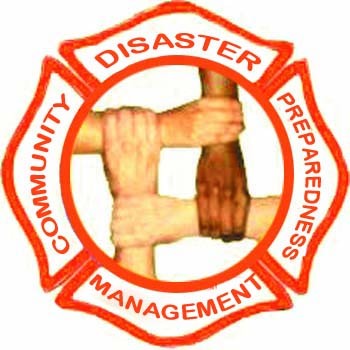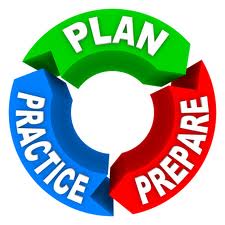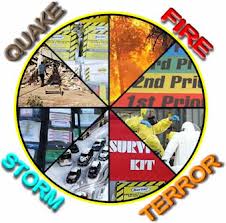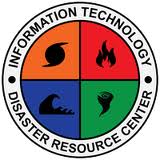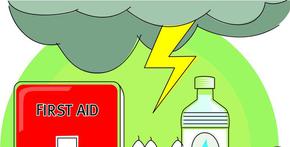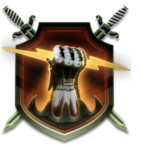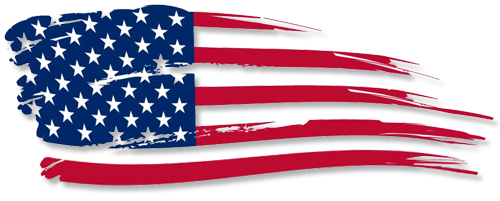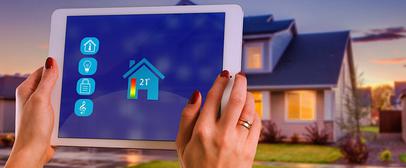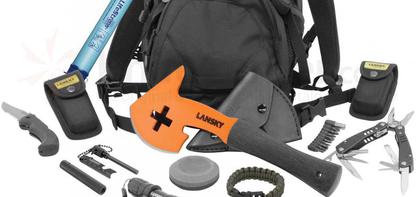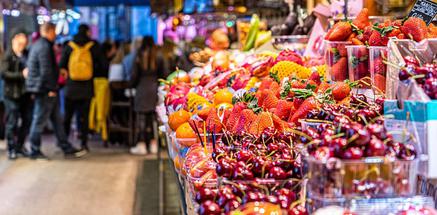AlreadyPrepared.com
Disaster Planning
THE HOUSEHOLD SURVIVAL KIT:
ESSENTIAL SURVIVAL TOOLS AND EQUIPMENT
It is easy to put the news of natural disasters out of mind when they happen in far-off countries, but earthquakes, storms and floods can happen almost anywhere - and eventually, happen almost everywhere.
Although your risk of being caught in a major natural disaster is very low, it happens to many thousands of people around the world every year. In many cases, their survival problems go far beyond the initial shock of the disaster itself. Even small-scale disasters can cause power blackouts and water shortages for days or weeks. The consequences of a large-scale disaster can last much longer.
All this is no cause for panic, doom or gloom. But consider what might happen to your family during a natural disaster, and make plans accordingly. And if you live in an area that is especially prone to certain types of disasters - such as the US tornado belt - it is even more vital that you are prepared for emergencies, and protected if they happen.
Building a household survival kit does not have to be expensive, and many of the survival tools listed below have uses beyond surviving a disaster. It is important to keep your survival tools and equipment together as much as possible, so everyone in your household knows where they are in an emergency. But checking, using and maintaining the tools frequently is an excellent way to ensure they will function - and that you know how to use them - if a disaster does strike.
1. Clean water
Water supplies are easily disrupted or contaminated during natural disasters, and the problems may continue for weeks or even months. You should have enough clean water stored to last everyone for at least 72 hours. Each person will need at least 3 liters per day just for drinking. That's a lot of water, and if you store it all in plastic bottles you should try to refresh your stock every few months or so, to prevent chemicals in the plastic tainting the water. A high-quality portable water filter can ensure you have drinkable water in almost any circumstances. Most are pumped by hand, and use a ceramic filter that is fine enough to keep out bacteria and other parasites.
2. Safe Food
You should have storable food to last everyone for 72 hours. Most food bars and freeze-dried foods can last for many months. Several survival kit suppliers have a range of specialist food packs, similar to military rations that can be safely stored for a number of years.
3. Warmth and Shelter
Store some emergency blankets and spare warm clothes - including gloves, socks and hats. They do not need to be fashionable, but woolen clothes are warmer and more water-resistant than cotton and jeans. Have at least one extra poncho or raincoat, and consider getting a sheet of plastic, tent-fly or tent as some form of emergency shelter against the elements.
4. Sources Of Light
As well keeping the night at bay, light sources can serve as an important communication tool with the outside world - flash-lights, light-sticks and even flares can be used to signal emergency crews when it is dark. Plan to provide enough light for three days. Unless you have a hand-powered flash-light, you will require batteries, so make sure you have enough of the right kind.
5. First Aid Kit
A standard first-aid kit available in most drug-stores is enough to begin with, but you may want to include other items - such as hand-wipes, face-masks, surgical alcohol and iodine for disinfecting cuts. Even minor wound can become major problems if they are not kept clean. You should consult your doctor about any essential prescription medicines you may need for your household survival kit.
6. A Radio
Many natural disasters can cause power outages, which may shut-down local cell and telephone networks. When this happens, radios become a vital channel of public communication, allowing emergency services to broadcast instruction and advice. The best choice for a household survival kit is a hand-powered radio - which can be used as much as it is required, and doesn't need batteries. But even a small battery-powered radio can help keep you informed of the progress of rescue efforts.
7. Other Tools
Depending on what and who you are preparing for - and how much you want to spend - your household survival kit might include: specialist survival knives and cutting tools, portable stoves or fire-making equipment, and portable power supplies that can be used to power equipment directly and charge batteries. You may also want to include pet supplies - and putting in a deck of cards is something of a lucky tradition. And by all means, don't forget that Bible!
DISASTER PREPAREDNESS PLAN TIPS:
1. Gather information: Become informed about hazards that can affect the region where you live. Find out if your community has warning signals and/or evacuation plans.
2. Assemble a Preparedness Kit: Make sure you have enough food and water to provide for your family for two weeks; Food Insurance's™ Essentials Kit and EmergencyPlus Kit are perfect for this. Additionally, you'll want to add things like medication, first aid supplies, water filters, heat sources, clothing, blankets, and temporary shelter.
3. Setup a Family Plan: Choose a place outside your home but nearby to meet in case of an emergency. Choose a secondary meeting location away from your neighborhood in case you can't get home. Select a friend or relative who lives out-of-state as your "family check-in contact".
4. Prepare Your Home: Post emergency telephone numbers by phones, and teach childern when and how to call 911. Install and maintain smoke alarms and fire extinguishers. Store important family documents in waterproof containers. Keep your Preparedness Kit in a location where it is easily accessable in case of a quick evacuation.
5. Practice and Maintain Your Plan: It is important to make sure that each member of your family knows your Disaster Preparedness Plan. Practice your plan, and update it as needed.
With advanced preparation, and emergency food storage, bug-out-bags and supplies, you can ensure your family is prepared for whatever the future may hold. Don't wait — start working on your family's disaster plan today.
60 EMERGENCY SUPPLIES YOU
CAN BUY FOR A BUCK
Here are some preparedness supplies that can be purchased for just a dollar. Let's start with the local Dollar Store and see where it goes.
Are you ready to do some budget prepping?
60 Prepping Items You Can Buy for a Dollar
1. Bottled Water
2. Canned Meats
3. Canned Fruits and Vegetables
4. Canned Juice
5. Nuts and Crackers
6. Candies
7. BIC Lighters
8. Paper Cups and Plates
9. Plastic Utensils
10. Plastic Table Covers
11. Non-Electric Can Opener
12. Paper Towels
13. Aluminum Foil
14. Plastic Storage Bags/Containers
15. Garbage Bags
16. Toilet Paper
17. Plastic Buckets
18. Sponges
19. Disinfectants
20. Chlorine Bleach
21. Bar Soap
22. Laundry Soap
23. Flashlights
24. Batteries
25. Candles
26. Butane Matches
27. Wood Matches
28. Spray Bottles
29. Scissors
30. Hand Tools
31. Duct Tape
32. Utility Knife
33. Plastic Sheeting
34. Garden Trowels
35. Personal Hygiene Items
36. Vitamins
37. Sunscreen Lotion
38. Sewing Kit
39. Latex Gloves
40. Cleansing Agent/Soap
41. Antibacterial Towelettes
42. Antibacterial Ointment
43. Antiseptic Ointment
44. Adhesive Bandages
45. Tweezers
46. Aspirin/Non-Aspirin Pain Reliever
47. Cotton Balls
48. Baby Bottles
49. Baby Wipes
50. Paper & Notepads
51. Pencils/Pens
52. Whistles
53. Jigsaw Puzzles
54. Card Games
55. Coloring Books & Crayons
56. Toys
57. Pet Food
58. Pet Bowls
59. Leash and Collar
60. Emergency Ponchos
Beyond the Dollar Store
The local dollar store is not the only place you will find bargains. The back aisles of many drugstores and even big box home improvement stores will have deals if you take the time to seek them out. And then there is the online kingpin, Amazon.
I often will point out “Almost Free” items in the BDS Bargain Bin and also on the Almost Free Page. There you will find whistles, can openers, pocket tools, flashlights and more.
The Final Word
I frequently recommend that you should purchase the very best you can afford. Still, sometimes you need something and don’t have the extra cash to purchase the best. Or perhaps you need extra, backup supplies.
When that happens, buying things from the dollar store or some other bargain outlet simply makes good sense. Besides, it is fun to shop for bargains. And don’t forget, you can hone skills and increase your knowledge for free.
There are so many things that you can do to get prepared –
all you really need is to get off your butt and start!
Emergency Preparedness & Planning
Crisis & Emergency Management - Issues - Safety
Security - Strategies - Solutions - Resources
Disaster Planning Strategies
Disaster planning involves a continuous cycle of preparing, mitigating, and responding to threats and hazards to ensure the safety and well-being of families and communities. A comprehensive plan addresses actions before, during, and after a disaster and should include all household members, with specific provisions for children, pets, the elderly, and those with special needs.
Steps for creating a family disaster plan
Assess risks: Identify the types of emergencies most likely to affect your area, such as hurricanes, floods, wildfires, or tornadoes. Check with your local emergency management agency for information on regional hazards.
Establish a communication plan: You may not be together when a disaster strikes. Establish an emergency communications plan that includes:
Out-of-town contact: Choose an out-of-area relative or friend as a "family contact." It is often easier to make a long-distance call than a local one when phone lines are overloaded. All family members should know to call this person and report their location and status.
"In Case of Emergency" (ICE) contacts: List emergency contacts in your cell phone as "ICE" so that emergency responders can easily identify them.
Alternative communication methods: Show family members how to use text messages, as they may go through when phone calls won't. Learn how to use social media to update loved ones on your status.
Determine meeting locations: Set two places for your family to meet: One place right outside your home for sudden emergencies, like a fire.
A second place outside your neighborhood in case of a required evacuation or if you cannot return home.
Plan for evacuation or sheltering in place: Practice your plan for both scenarios.
Evacuation: Identify several possible evacuation routes and modes of transportation. Listen to local emergency officials and follow their specified routes.
Shelter in place: Designate a safe room within your home with as few windows and doors as possible. Make sure you can access your emergency kit from this location.
Create and maintain a disaster kit: Assemble a kit in an easy-to-carry container, such as a plastic bin or backpack.
Essential items:
Water (one gallon per person per day)
Non-perishable food (three-day supply)
First-aid kit
Flashlight, extra batteries, and a battery-powered radio
Manual can opener
Multi-purpose tool
Personal hygiene items
Copies of important documents and cash
Emergency blankets
Custom items:
Prescription and non-prescription medications
Infant formula, diapers, and other baby supplies
Pet food and water
Secure your home: Walk through your home at least once a year to identify and fix potential hazards, like unsecured bookshelves or water heaters.
Practice and maintain your plan: Regularly quiz family members on the plan and conduct drills. Check and update your supplies and documents twice a year.
Community disaster planning
It takes an entire community to effectively prepare for and respond to disasters. You can get involved by:
Volunteering with a local organization: Contact local chapters of the American Red Cross or volunteer for a Community Emergency Response Team (CERT) to receive valuable training.
Connecting with neighbors: Create a block-level plan with neighbors to share resources, skills, and equipment.
Contacting local officials: Reach out to your local fire department, police department, or emergency management agency to discuss ways to improve community preparedness.
Resources For Community Disaster Planning
For community disaster planning, a wide range of resources is available from federal agencies, non-profits, and local organizations. These groups offer training, toolkits, and guidance to help communities prepare for, respond to, and recover from emergencies.
Federal and state resources
comprehensive, research-based guidance for communities and individuals.
Key resources include:
Ready Campaign: Provides information and tools to be proactive and prepare for disasters and emergencies.
FEMA's Preparedness Community: An online portal for practitioners, students, and partners that offers protective action information and resources.
Community Emergency Response Team (CERT): Offers training for community members in basic disaster response skills, such as fire safety, light search and rescue, and disaster medical operations. You can find local CERT programs through the FEMA website.
Recovery Resources: Guidance and toolkits for state, local, tribal, and territorial governments on how to manage disaster recovery efforts.
Citizen Corps: This FEMA program is coordinated at the local level and brings together community leaders to plan for emergencies. It works with affiliated organizations like the American Red Cross and helps organize Community Emergency Response Teams (CERTs).
National Weather Service (NWS): The NWS Weather Prediction Center provides essential weather forecasts and warnings to help communities prepare for and respond to natural hazards like hurricanes, tornadoes, and floods.
Non-profit organizations
American Red Cross: Offers inclusive preparedness resources, first aid and CPR training, and guidance on how to create a family disaster plan. They also help organize communities through local chapters.
Habitat for Humanity: Provides educational resources on family and community preparedness, including how to create a plan and what supplies to gather.
The National Council on Aging (NCOA): Offers specific guidance for community-based organizations serving older adults, including an Emergency Action Plan (EAP) template.
Center for Disaster Philanthropy (CDP): A non-profit that provides funding and resources to communities for preparedness efforts and post-disaster recovery.
Community-based resources
Local Emergency Management Office: Your city or county's emergency management office can provide information on local response plans, evacuation routes, and designated emergency shelters.
Neighborhood Associations: Groups like neighborhood watch can be excellent starting points for organizing neighbors and sharing information.
Community Mapping: Involve community members in mapping out resources, such as safe facilities and transportation, as well as vulnerabilities like flood zones. This inclusive approach ensures that the plan addresses the community's specific risks and needs.
Local Fire and Police Departments: These agencies can offer advice on improving your community's response capacity and provide essential contacts.

